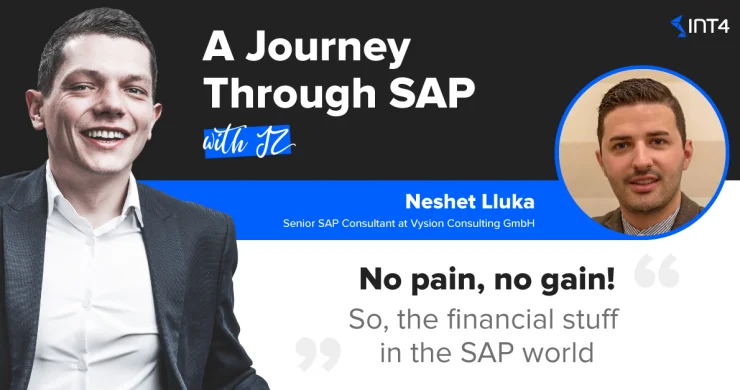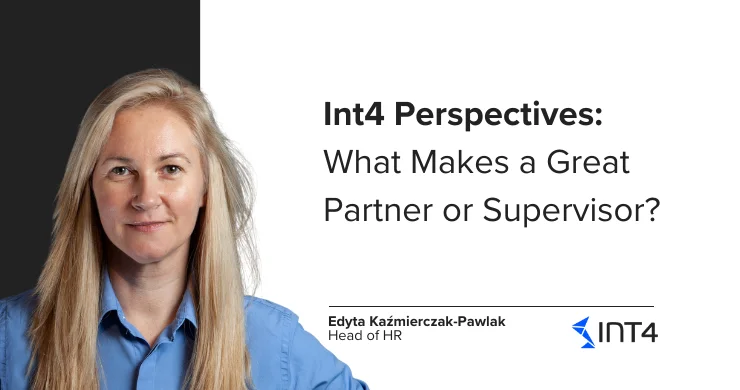No pain, no gain! So, the financial stuff in the SAP world

Let me introduce my guest
My today’s interlocutor is a Senior Consultant with a strong track record of streamlining operations to increase organizational effectiveness. He has carried out projects in many European countries and speaks five languages. He has been working in SAP consulting for over five years and has focused on SAP BRIM solutions in particular. He is a Telecommunications Engineer by education.
About the new latest features of SAP BRIM in S/4HANA, SAP-related projects in various European countries, and his short adventure as an informatics lecturer – Neshet Lluka is interviewed by Jarosław JZ Ziółkowski.
Reading time: 7 minutes
1. I have already had 10 interviews with SAP experts, but I have to admit that this is the first time I have met with the name SAP BRIM. Thus, let’s start today with an explanation of what SAP BRIM is?
SAP BRIM stands for SAP Billing and Revenue Innovation Management (BRIM), and it is part of order to cash solution, to support subscription and consumption-based recurring revenue business models. Its main goal is to maximize business revenue.
It is a highly integrated platform that can be implemented in a modular manner, depending on the priority and needs of the business.
The solution consists of five SAP modules:
- SAP Subscription Order Management,
- SAP Convergent Charging
- SAP Convergent Invoicing
- SAP Contract Accounts Receivable and Payable
- SAP Convergent Mediation
The solution brings benefits for both companies such as predicted revenue stream and plans business strategy, continuous customer engagement, and customer such as flexibility to scale, reduce the initial investment.
2. It sounds a little bit complicated. Therefore, I need to ask you what technical skills are required to work with BRIM in SAP?
Being on board with SAP BRIM Consultancy, requires the understanding of complex and respectively presence of expedient skills like having necessary know-how ABAP Programming Language to build and implement any customer report, method, Badi, etc. On top of it, rating, charging, billing, and invoicing concepts, configuration, and implementation know-how skills. Having these skills, you will be able to develop and configure custom charging logic for different products and services.
As already stated, being complex includes not just the technical side but also the softs, like communication with customers, are significant in any SAP consultancy. I firmly believe that the combination of technical and soft skills is the key to success.
3. After the last interview with Sean D’Silva, I got even more immersed in S/4HANA-related topics. So I must ask you the following, what are the newest features of SAP BRIM in S/4HANA?
Continuous improvements are significant in the nowadays market. As soon as all customers move from ECC to S/4HANA, SAP is bringing new features and functionality of SAP BRIM Solution in S/4HANA. The latest within S4/HANA 1909 FPS01 that I have been personally looking for, are:
- Counter Sharing within Subscription Order Management,
- Shared Allowances within Subscription Order Management,
- Intercompany Settlement within Convergent Invoicing
4. Before we go any further, let us summarize the SAP BRIM related aspects. I’m wondering what the use of SAP Hybris Billing module is.
Initially, SAP BRIM, called SAP Hybris Billing, was introduced and implemented in the telecommunication industry. Nowadays, since the business model is moving from products to subscriptions, SAP BRIM is highly demanded and valuable in the market as a proven solution in any industry. SAP BRIM is used in telecommunication, transportation, manufacturing, financial services, banking industries, etc. The solution itself is agile, flexible, and scalable. SAP BRIM is industry independent as a result. The companies can benefit from it by maximizing the revenue and getting rapid ROI.
5. Okay, now we can segue a little bit. By verifying you certificates, I came to the conclusion that working on projects is definitely your strongest point. Therefore, I would like to ask which of your certifications prepared you for practical work on projects best?
I enjoy being part of a project and also lead projects. For me, projects bring innovations. It is hard saying, as one certificate does not give you the complete perspective or the perfect tool applicable to all cases. There are always several steps in the process to reach the goal. Unquestionably, the SAP Hybris Billing certificate prepared me for practical work, for the architectural design of the solution, integration with other systems, and steps to implement it. At the same time, other certificates like ITIL, PRINCE2 SAP Activate helped me a lot with dealing with the incident, problem management or escalation process. Also, highlight and manage a project team, track, report, and meet the customer expectations about the project.
6. So, tell me which one was the most difficult to get and of course why?
Without further doubts, the most difficult one was the SAP Hybris Billing which I mentioned previously. The modular solution, which consists of five different modules, requires time and effort to get it successfully. But without regret is the best practical certification for an SAP BRIM consultant and as they say “no pain no gain”. I highly recommend it.
7. There is no doubt that each of the certificates mentioned by you raises technical skills and prepares to work on projects. You had a chance to work on projects in various European countries. Do you think that the market for SAP services in each of them is different?
Well, I do think that the market for SAP services reflects the difference among countries.
For instance, in German-speaking market (DACH) the SAP services are heavily present, but I find it a bit difficult to say that SAP services are at the same level in the Czech Republic or Slovakia.
8. What do you think could be the reason for these differences?
Primarily, I think most of them are linked to the overall economic situation of each country, which then dictates the market shares among SAP and other competitors. Crucial parameters to scale the markets are flexibility and rapidity of adaptation to new features and functionalities that SAP is offering. As an example, the Austrian market still does not have a completed S/4HANA project implementation, whereas Germany is much more ahead.
9. Going further, you speak as many as five languages – this is undoubtedly very useful when working with clients from all over the world. But I wonder which of these five languages is most useful in the SAP world? Except for English and German.
I couldn’t agree more with you. Vysion Consulting specializes in SAP BRIM projects, and together we have implemented many projects in Europe and America, where the most useful language is German and English.
But in my opinion, last but not least, another most useful language could be Spanish because it is spoken in many countries, offering a broader SAP market. I have not been part of any project where the project language is Spanish yet. I am looking forward to it.
10. What’s more, some time now, you have been publishing regularly on LinkedIn sharing your knowledge with the community. Are you planning to go out to a broader audience? Maybe it’s time for the first SAP PRESS book?
Publishing at LinkedIn is a knowledge and experience exchange. It is my passion to help people and stay informed; it increases my productivity and keeps me updated about SAP BRIM as well. My idea is to stay connected with as many SAP BRIM Consultants around the world as possible and why not build a LinkedIn SAP BRIM community. I like to bring value and help to other fellow SAP BRIM Consultants with my articles.
At this stage, I am more into opinion, feedback and open dialogue from my colleagues or other LinkedIn fellows. The plan is to continue this track and yes, of course, to go out in the broader audience. Never say never, maybe one day I will write another book that SAP world will need.
11. Today’s interview is going to end with an interesting fact. Probably not everyone knows, but for several months you worked as an Informatics Lecturer. I’m wondering what your classes looked like? What did you teach your students and what methods did you use to explain the most complicated topics?
That was an enjoyable experience for me. I was honored lecturing informatics at New York High School, for all high school classes. Well, it is not easy to teach the youth.
I have tried to share the consistency and knowledge, be friendly and strict to them and create a good relationship by supporting and helping in their ideas about technology. Actually, it resulted in me having excellent ideas about IT and desire to continue further studies in this area. It was my first experience in teaching, and I tried to give and get the most of it.
Find me via LinkedIn
Read also:
1. Life writes the best “scenarios”. Technology world, according to James Olcott
Popular tags
ABAP int4 INT4 IFTT Int4Interview S/4HANA SAP AIF SAP CPI sap integration


